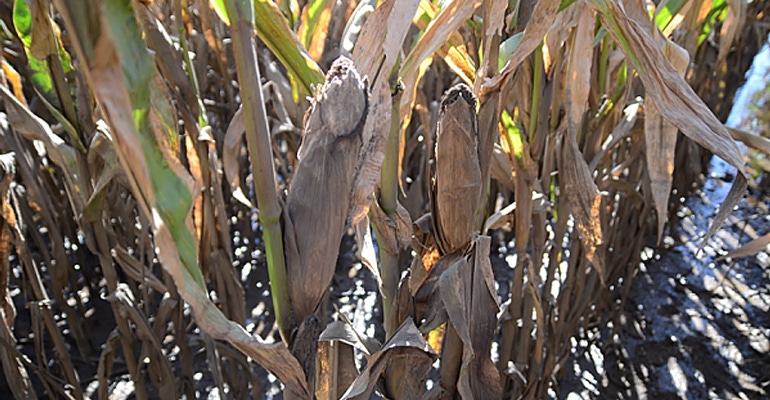
The Iowa Department of Agriculture is reminding farmers that grain impacted by flooding of fields this fall may be considered adulterated by the U.S. Food and Drug Administration. Grain that’s determined to be adulterated cannot be used for feed or food. Flood-impacted farmers need to handle their grain appropriately.
Flooding along rivers and streams affected standing crops in some areas of the state. Flooded fields with water over the grain have occurred in southwest, northwest and east-central Iowa. The flooding was caused by intense rains over Labor Day and the following weekends.
“Poor stalk strength causing downed corn has increased the amount of grain covered by flood waters,” observes Charlie Hurburgh, director of the Iowa Grain Quality Initiative at Iowa State University. “Grain submerged by uncontrolled floodwaters is considered adulterated under the federal Food, Drug and Cosmetic Act.”
Follow recommended guidelines
This policy dates to 2008 when grain storage facilities in Cedar Rapids were inundated, and it has been applied to several situations since then. Adulterated material cannot be put in commercial facilities of any type, where there would be a chance of entering human or animal food. FDA updated its flooded-food guidance Sept. 17. Grains are considered food crops.
All grains for which the edible portion was submerged are considered adulterated. “This would include grain from fields that had shorter plants flooded but not taller ones, if both were harvested together,” Hurburgh says.
“By rule, adulterated materials cannot be used for human or animal food in any circumstance. For any adulterant, however, there is a provision for the holder to ask the FDA to approve a reconditioning plan. In Iowa, the contact point for the FDA is the Iowa Department of Agriculture and Land Stewardship’s Feed and Fertilizer Bureau,” he says. “This process may take considerable time and effort.”
Some grain must be tested
Grain that was not flooded but was near floodwater on partially submerged plants is subject to testing for contaminants based on a risk evaluation of the specific situation.
“This puts the responsibility for the risk assessment on the producer,” Hurburgh says. “You should discuss the situation with your crop insurance and liability insurance carriers. Document any decisions made, as clearly as possible: How much area? What did you do? Why? Food safety regulations are now very reliant on documentation of actions and reasoning.”
In its recently updated guidelines, FDA provides a list of potential hazards in flooded grain. Mycotoxins, heavy metals, pathogenic organisms, pesticide residues and polychlorinated biphenyls are the main concerns. The Iowa State University Veterinary Diagnostic Lab, accessible through any veterinarian in Iowa, is one source of testing and support.
Use approved reconditioning plan
FDA distinguishes between uncontrolled waters (streams, rivers, etc.) and isolated low places in fields. The guidance states: “Flooding is the flowing or overflowing of a field with water outside a grower’s control. Pooled water (e.g., after rainfall) that is not reasonably likely to cause contamination of the edible portions of fresh produce is not considered flooding.”
Uncontrolled flowing water may have picked up contaminants, while ponds in low places are less likely to do so.
Grain elevators and grain processors should be aware of any flooded grain situations in their trade areas.
“Because flooded grain is adulterated, this grain should not be offered for sale nor knowingly taken into a commercial facility,” Hurburgh says. “Processors have flooded grain as one of the reasonably foreseeable hazards being controlled in their Food Safety Plan under the Food Safety Modernization Act. Without an approved reconditioning plan, this grain is effectively a total loss with no portion recoverable from the market.”
The continued rainy weather is increasing the chances for mold growth on all corn, he adds. “Grain that hasn’t been flooded but is showing mold growth should be harvested and dried as quickly as possible.”
About the Author(s)
You May Also Like




